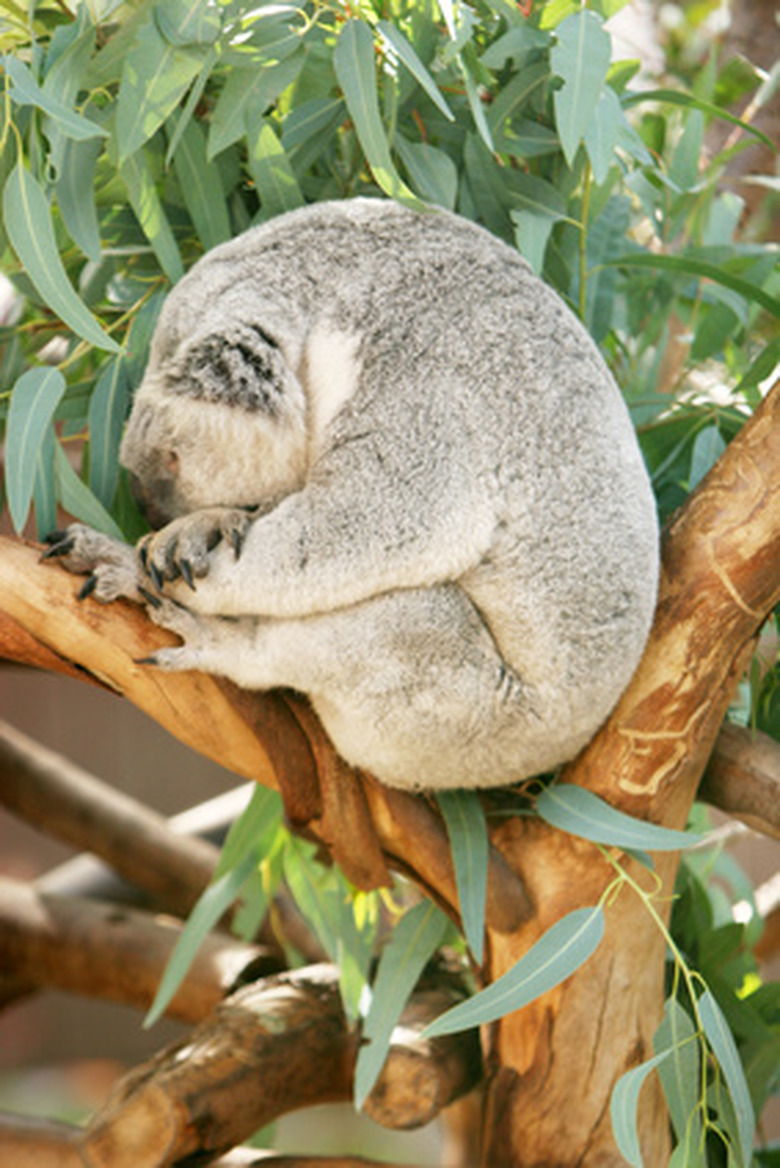Plants In The Great Victoria Desert
The Great Victoria Desert is the largest desert region in Australia and the third largest desert in the world. It covers over 160,000 square miles in the south-central portion of the country. In spite of very low annual rainfall amounts, a large number of plant species exist here. Common plants include the marble gum tree, a type of eucalyptus, the mulga and spinifex grass. Others thrive as well–flowering grevilleas and acacias add to the colorful landscape after a rare rain occurs.
Eucalyptus
Three species of gum tree, or eucalyptus, grow in the Great Victoria Desert. The species are Eucalyptus gongylocarpa, E. socialis and E. pyriformis, all of which grow in open woodlands. Eucalyptus gongylocarpa is called desert gum and is commonly found in the sand of the Great Victoria Desert. Also called marble gum, this tree grows as tall as 45 feet and is very frost and drought tolerant. It develops multiple stems on its pale-colored trunk and has cream-colored flowers when it blooms. It provides food and habitat for a number of Australian bird species.
- The Great Victoria Desert is the largest desert region in Australia and the third largest desert in the world.
- Also called marble gum, this tree grows as tall as 45 feet and is very frost and drought tolerant.
Hummock Grass
Triodia is the name of the genus that includes hummock grass, according to World Wildlife.org. This grass forms the understory in regions where eucalyptus trees dominate the landscape. Its name comes from the tendency of this plant to form hummocks at its base where sand piles up due to windy conditions. Some form of hummock grass occurs in 20 percent of Australia, in all its states except for Tasmania. There are 64 species of the perennial hummock grass, all of which thrive on sandy soils and rocky outcrops that have few nutrients. Clumps of hummock grass can be as large as 6 feet tall and 9 feet wide.
Acacia
The shrub or small tree called mulga (Acacia aneura) stretches all the way across the Great Victoria Desert in a thin band for hundreds of miles. It has a dense pyramid shape and reaches up to 20 feet in height. Its 1-inch long golden colored flowers bloom in spring. This tree is grown as a landscape plant in other arid areas of the world, such as Arizona, where it serves as a low-maintenance street tree with value as a privacy screen in residential settings.
- Triodia is the name of the genus that includes hummock grass, according to World Wildlife.org.
- There are 64 species of the perennial hummock grass, all of which thrive on sandy soils and rocky outcrops that have few nutrients.
